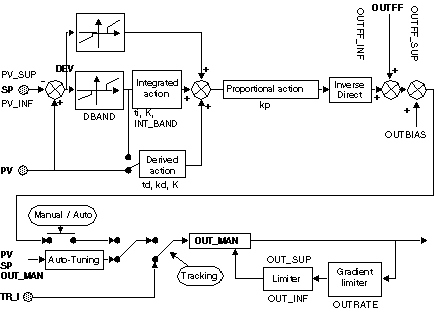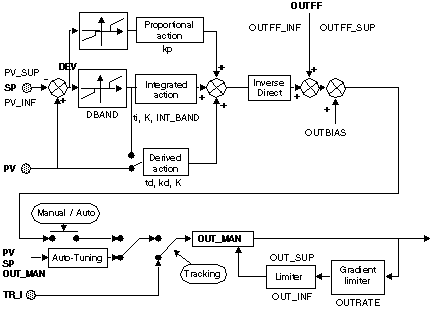The PID function executes a PID algorithm with a mixed (serial / parallel) or parallel structure. It has the following functions:
-
Calculation of proportional, integral and derivative actions in incremental or absolute format.
-
Antisaturation of the integral action.
-
Direct or inverse action.
-
Derivative from the process value or from the deviation.
-
Parametering of the transient gain of the derivative.
-
Integral band
-
Feed forward action to compensate for interference.
-
Dead band on deviation.
-
High and low limitation of the output signal.
-
Limit of the gradient of the output signal.
-
Output shifting, also called manual integrated.
-
Selecting Automatic / Manual operating mode.
-
Tracking Mode.
-
Autotuning of the principle coefficients.
The PID transfer function depends on the structure used (mixed or parallel structure):
Mixed structure
Parallel structure
Functional Diagram of the Mixed PID
This diagram illustrates the principle of the mixed structure PID. It does not represent the implementation of the algorithm in incremental format.
Function Diagram of the Parallel PID
This diagram illustrates the principle of the parallel structure PID. It does not represent the implementation of the algorithm in incremental format.




